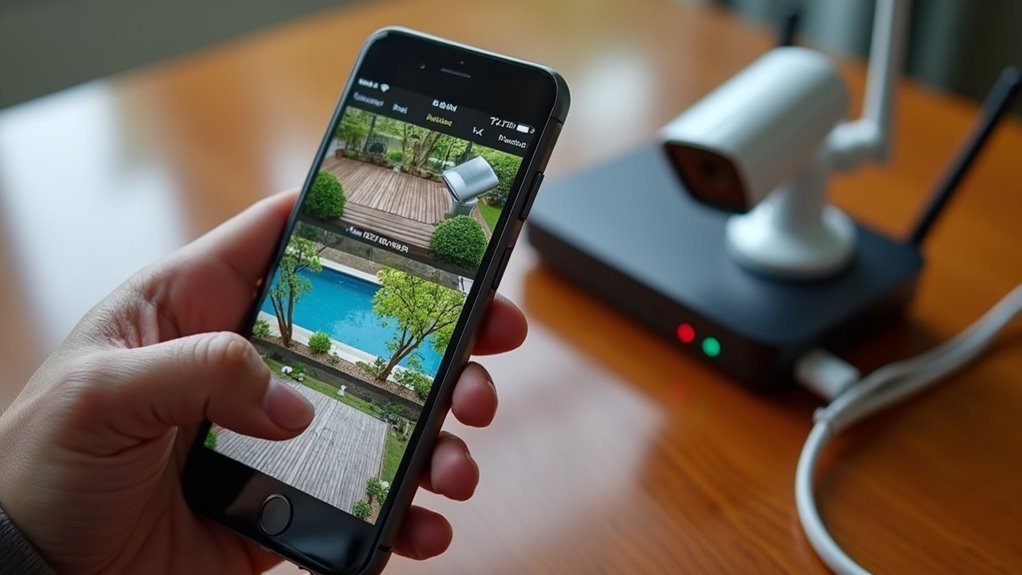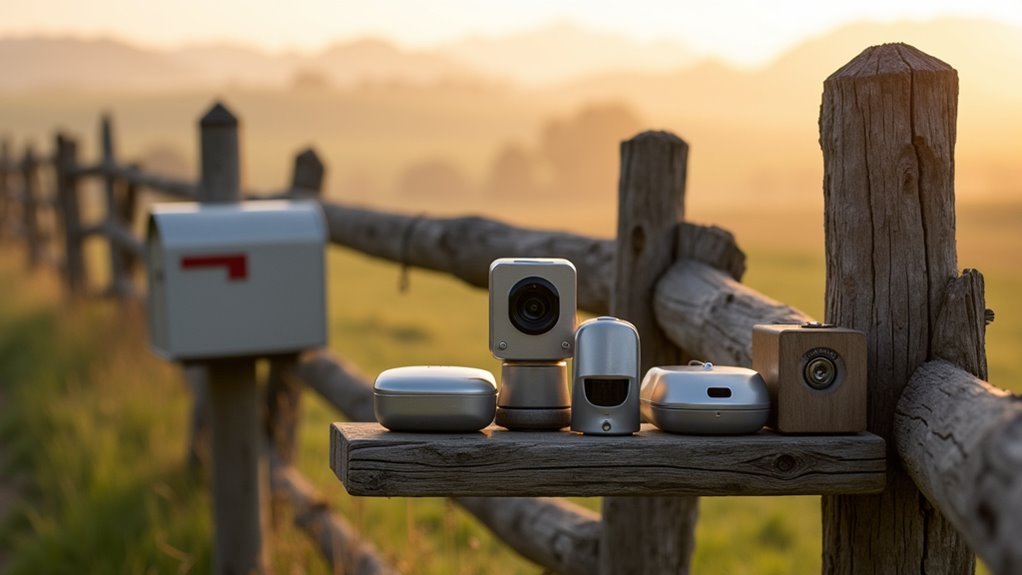You’ve probably struggled with basic motion sensors that can’t tell if someone’s actually in the room or just walked through it. Traditional PIR sensors miss stationary people, while simple door sensors provide zero insight about ongoing occupancy. The ESP8266 microcontroller changes everything by enabling sophisticated detection methods that go far beyond basic movement triggers. These five proven solutions will transform how you monitor room occupancy in ways you haven’t considered.
PIR Motion Sensor Integration With ESP8266

When you’re building a room occupancy detection system, integrating a PIR motion sensor with your ESP8266 creates an effective and affordable solution. Your sensor provides a detection range of 3-5 meters with a 100-degree coverage cone, making it ideal for monitoring room occupancy.
You can program your ESP8266 to trigger automation tasks like turning on lights or sending notifications when the sensor detects movement.
To optimize performance, you’ll want to adjust your PIR sensors’ sensitivity settings, especially in environments where people remain seated for extended periods.
Fine-tuning PIR sensitivity prevents false negatives when occupants sit still, ensuring reliable detection in offices and living rooms.
For extensive coverage, you can deploy multiple PIR sensors throughout different room areas, connecting them to your ESP8266. This enhances motion detection accuracy and creates a robust home automation system that seamlessly integrates with platforms like Home Assistant.
Mmwave Radar Presence Detection Setup
While PIR sensors excel at detecting movement, mmWave radar presence detection offers superior accuracy by detecting even stationary occupants in your room.
The DFRobot SEN0395 sensor provides reliable occupancy detection that isn’t affected by temperature or lighting changes, making it an ideal occupancy sensor for smart homes.
You’ll integrate this advanced motion sensor with your D1 Mini ESP8266, enabling seamless wireless communication with Home Assistant through ESPHome.
The sensor covers 0-5 meters with a 90-degree field of view, ensuring thorough room monitoring.
Adjustable sensitivity settings let you fine-tune detection accuracy and minimize false positives.
The included YAML configuration file simplifies setup, allowing you to deploy these sophisticated sensors without extensive technical knowledge.
This makes mmWave radar an excellent upgrade from traditional motion sensors.
Multi-Sensor Fusion for Enhanced Accuracy

Although individual sensors like mmWave radar provide excellent detection capabilities, combining multiple sensor types creates a more robust and accurate occupancy detection system. Multi-sensor fusion leverages the strengths of different occupancy sensors to minimize false readings and enhance overall reliability.
| Sensor Type | Primary Function |
|---|---|
| PIR Motion Sensors | Detect heat-based movement across larger areas |
| Audio Sensors | Differentiate human activity from background noise |
| Accelerometers | Capture subtle movements from seated occupants |
| mmWave Radar | Provide precise presence detection |
| Combined Integration | Enable advanced algorithmic analysis |
You’ll achieve superior occupancy detection by integrating multiple motion sensors with your ESP8266. This approach allows sophisticated algorithms to distinguish between entering and exiting individuals while reducing false negatives that single-sensor systems often produce.
Bluetooth Device Tracking Implementation
Beyond combining traditional sensors, you can implement Bluetooth device tracking to transform your ESP8266 occupancy detection system into a personalized automation hub.
Your smartwatch or smartphone becomes a unique identifier, allowing the system to recognize specific users entering rooms. This Bluetooth tracking capability enables customized responses—adjusting lighting, temperature, and other settings based on individual preferences.
Configure your ESP8266 to detect multiple Bluetooth connections simultaneously, tracking several occupants at once.
Combine this with motion sensors for enhanced accuracy in occupancy detection. ESPHome’s community-developed libraries simplify integration, making it straightforward to add Bluetooth functionality to existing home automation setups.
You’ll achieve more sophisticated room control that responds not just to presence, but to who’s actually present.
Load Cell Bed Occupancy Monitoring

When you need precise bed occupancy detection that goes beyond simple motion sensing, load cells offer an accurate weight-based solution that transforms your ESP8266 into a sophisticated sleep monitoring system.
You’ll connect these sensors through an HX711 amplifier to your Wemos D1 Mini, creating reliable occupancy detection that responds to actual weight changes rather than movement.
Your configuration requires proper Wheatstone bridge wiring for peak performance.
Calibration becomes critical—you’ll need a known 5kg weight to adjust the calibration_factor variable, ensuring accurate readings that distinguish between occupied and empty states.
Once calibrated, you can integrate your load cell system with Home Assistant for real-time monitoring.
This setup enables powerful automations based on actual bed occupancy, making it ideal for sleep tracking and presence detection applications.
Frequently Asked Questions
What Is the Typical Battery Life of ESP8266 Room Occupancy Sensors?
You’ll typically get 6-12 months of battery life from your room occupancy sensors, depending on detection frequency, sleep modes, battery capacity, and sensor types you’re using for motion detection.
How Much Does It Cost to Build a Basic ESP8266 Occupancy Detection System?
You’ll spend around $15-30 for a basic system. An ESP8266 costs $3-5, PIR sensor $2-3, breadboard $2, resistors/wires $3-5, and optional enclosure $5-15. Pre-made modules increase costs slightly.
Can ESP8266 Occupancy Sensors Work Without Internet Connectivity?
You can operate ESP8266 occupancy sensors without internet connectivity by programming them for local detection and storage. They’ll function independently, triggering local actions or storing data until connectivity returns.
What Is the Maximum Range for ESP8266 Wireless Communication in Buildings?
You’ll get 30-100 feet indoors with ESP8266 WiFi, depending on walls and interference. Concrete and metal greatly reduce range, while open spaces allow maximum distance. Multiple floors drastically limit connectivity.
How Do You Protect Occupancy Data Privacy When Using ESP8266 Solutions?
You’ll protect occupancy data privacy by implementing local processing, encrypting transmissions, using anonymized sensor data, avoiding personal identifiers, storing minimal information locally, and ensuring you’re not capturing identifying characteristics or behaviors.





Leave a Reply